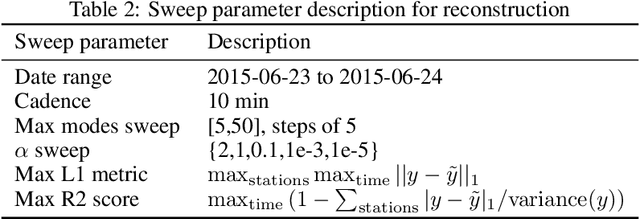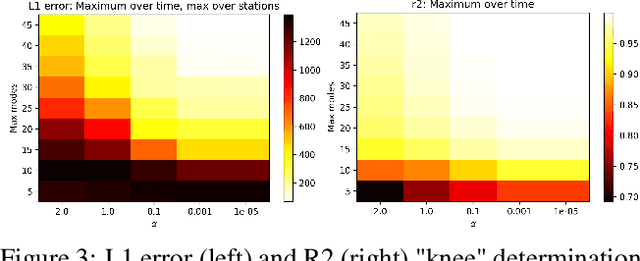Vishal Upendran
Bay Area Environmental Research Institute, USA; Lockheed Martin Solar and Astrophysics Laboratory, USA
SPACE-SUIT: An Artificial Intelligence based chromospheric feature extractor and classifier for SUIT
Dec 11, 2024Abstract:The Solar Ultraviolet Imaging Telescope(SUIT) onboard Aditya-L1 is an imager that observes the solar photosphere and chromosphere through observations in the wavelength range of 200-400 nm. A comprehensive understanding of the plasma and thermodynamic properties of chromospheric and photospheric morphological structures requires a large sample statistical study, necessitating the development of automatic feature detection methods. To this end, we develop the feature detection algorithm SPACE-SUIT: Solar Phenomena Analysis and Classification using Enhanced vision techniques for SUIT, to detect and classify the solar chromospheric features to be observed from SUIT's Mg II k filter. Specifically, we target plage regions, sunspots, filaments, and off-limb structures. SPACE uses You Only Look Once(YOLO), a neural network-based model to identify regions of interest. We train and validate SPACE using mock-SUIT images developed from Interface Region Imaging Spectrometer(IRIS) full-disk mosaic images in Mg II k line, while we also perform detection on Level-1 SUIT data. SPACE achieves an approximate precision of 0.788, recall 0.863 and MAP of 0.874 on the validation mock SUIT FITS dataset. Given the manual labeling of our dataset, we perform "self-validation" by applying statistical measures and Tamura features on the ground truth and predicted bounding boxes. We find the distributions of entropy, contrast, dissimilarity, and energy to show differences in the features. These differences are qualitatively captured by the detected regions predicted by SPACE and validated with the observed SUIT images, even in the absence of labeled ground truth. This work not only develops a chromospheric feature extractor but also demonstrates the effectiveness of statistical metrics and Tamura features for distinguishing chromospheric features, offering independent validation for future detection schemes.
Surface Flux Transport Modelling using Physics Informed Neural Networks
Sep 03, 2024Abstract:Studying the magnetic field properties on the solar surface is crucial for understanding the solar and heliospheric activities, which in turn shape space weather in the solar system. Surface Flux Transport (SFT) modelling helps us to simulate and analyse the transport and evolution of magnetic flux on the solar surface, providing valuable insights into the mechanisms responsible for solar activity. In this work, we demonstrate the use of machine learning techniques in solving magnetic flux transport, making it accurate. We have developed a novel Physics-Informed Neural Networks (PINNs)-based model to study the evolution of Bipolar Magnetic Regions (BMRs) using SFT in one-dimensional azimuthally averaged and also in two-dimensions. We demonstrate the efficiency and computational feasibility of our PINNs-based model by comparing its performance and accuracy with that of a numerical model implemented using the Runge-Kutta Implicit-Explicit (RK-IMEX) scheme. The mesh-independent PINNs method can be used to reproduce the observed polar magnetic field with better flux conservation. This advancement is important for accurately reproducing observed polar magnetic fields, thereby providing insights into the strength of future solar cycles. This work paves the way for more efficient and accurate simulations of solar magnetic flux transport and showcases the applicability of PINNs in solving advection-diffusion equations with a particular focus on heliophysics.
Heating and dynamics of the Solar atmosphere
Apr 04, 2023



Abstract:The solar atmosphere shows anomalous variation in temperature, starting from the 5500 K photosphere to the million-degree Kelvin corona. The corona itself expands into the interstellar medium as the free streaming solar wind, which modulates and impacts the near-Earth space weather. The precise source regions of different structures in the solar wind, their formation height, and the heating of the solar atmosphere are inextricably linked and unsolved problems in astrophysics. Observations suggest correlations between Coronal holes (CHs), which are cool, intensity deficit structures in the solar corona, with structures in the solar wind. Observations also suggest the local plasma heating in the corona through power-law distributed impulsive events. In this thesis, we use narrowband photometric, spectroscopic, and disc-integrated emission of the solar atmosphere ranging from Near Ultraviolet to X-rays along with in-situ solar wind measurements to understand (i). the source regions of the solar wind, (ii). the underlying mechanism of solar coronal heating, and (iii). the differentiation in dynamics of CHs with the background Quiet Sun (QS) regions, which do not show any significant signature of the solar wind. We leverage machine learning and numerical modeling tools to develop solar wind forecasting codes using interpretable AI, inversion codes to infer the properties of impulsive events and to understand the differences in the thermodynamics of CHs and QS regions. We finally present a unified scenario of solar wind emergence and heating in the solar atmosphere and discuss the implications of inferences from this thesis.
Global Earth Magnetic Field Modeling and Forecasting with Spherical Harmonics Decomposition
Feb 02, 2021



Abstract:Modeling and forecasting the solar wind-driven global magnetic field perturbations is an open challenge. Current approaches depend on simulations of computationally demanding models like the Magnetohydrodynamics (MHD) model or sampling spatially and temporally through sparse ground-based stations (SuperMAG). In this paper, we develop a Deep Learning model that forecasts in Spherical Harmonics space 2, replacing reliance on MHD models and providing global coverage at one minute cadence, improving over the current state-of-the-art which relies on feature engineering. We evaluate the performance in SuperMAG dataset (improved by 14.53%) and MHD simulations (improved by 24.35%). Additionally, we evaluate the extrapolation performance of the spherical harmonics reconstruction based on sparse ground-based stations (SuperMAG), showing that spherical harmonics can reliably reconstruct the global magnetic field as evaluated on MHD simulation.
 Add to Chrome
Add to Chrome Add to Firefox
Add to Firefox Add to Edge
Add to Edge